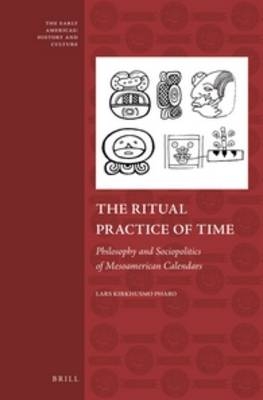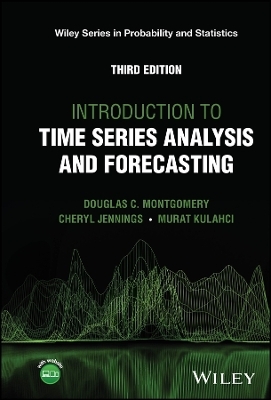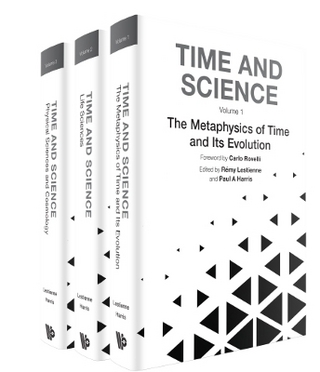
The Ritual Practice of Time
Brill (Verlag)
978-90-04-25235-6 (ISBN)
Calendars of Mesoamerican civilisations are subjected to what is categorised as “ritual practices of time”. This book is a comparative explication of rituals of time of four calendars: the Long Count calendar, the 260-day calendar, the 365-day calendar and the 52-years calendar. Building upon a comparative analytical model, the book contributes new theoretical insights about ritual practices and temporal philosophies. This comprehensive investigation analyses how ritual practices are represented and conceptualised in intellectual systems and societies. The temporal ritual practices are systematically analysed in relation to calendar organisation and structure, arithmetic, cosmogony and chronometry, spatial-temporality (cosmology), natural world, eschatology, sociology, politics, and ontology. It is argued that the 260-day calendar has a particular symbolic importance in Mesoamerican temporal philosophies and practices.
Lars Kirkhusmo Pharo, Doctor Artium (2007) in history of religions. Research Associate, Moses Mesoamerican Archive and Research Project, Harvard University. Pharo has published extensively on the philosophies of Indigenous peoples of the Americas.
List of Figures
Acknowledgements
Introduction: The Ritual Practise of Time
I. The Ritual Practices of Time of The Long Count Calendar of The Classic Maya
1. The ritual sequential (interval) structure of the Long Count calendar.
2. Methodology of analysing the rituals of time of the Long Count calendar.
3. Cosmogonies and the ritual practise of time and space.
3. Eschatology and the ritual practise of time.
4. The politics and social ritual practise of time.
5. The philosophy and religion of ritual practice of linear divine time.
The Ritual Practice of Time of the 260-day calendar and the 365-day Calendar of the Postclassic Yucatec Civilisation
II. The Ritual Practice of Time of the 260-Day Calendar of the Postclassic Yucatec Civilisation: The Burner Ceremonies of Quadripartite 65-Day Intervals
1. Interval rituals of the 260-day calendar in Mesoamerica.
2. Sources and research history.
3. The 260-day calendar of Mesoamerica.
4. The quadripartite ritual sequential interval (65-days) structure of a cycle of 260-days.
5. The starting and termination date of the 260-day calendar.
6. Cosmogony and the ritual practise of time and space.
7. A spatial-temporal (quadripartite) ritual.
8. A symbolic agricultural temporal ritual.
9. The ritual practice of the quadripartite interval sequence of the four Burner periods
(65-days) of 260-days.
III. The Ritual Practice of Time of the Postclassic Yucatec 365-Day Calendar
1. The cyclic calendar ending and calendar inaugurating ritual.
2. Sources and research history.
3. The Post-Classic Yucatec New Year ceremony as a rite de passage.
4. The ritual structure of the Mesoamerican and the European Catholic liturgical 365-day
calendar.
5. An interval ritual: a ritual transition from Xul to Yaxk’in and Mol within the Post-
Classic Yucatec 365-day calendar.
6. Cosmogony and the ritual practise of time and space.
7. A spatial-temporal ritual.
8. The politics and social ritual practise of time.
9. The Year Bearer: A deified burden of time of the cyclic 365-day calendar.
10. The Post-Classic Yucatec New Year festival as an agricultural ritual.
11. Order (structure) versus disorder (anti-structure): A ritual structuring of cyclical
agricultural time.
IV. The Ritual Practice of Time of the 52-Year Calendar of the Aztecs in the Postclassic Period
1. The cyclic 52-year calendar (Calendar Round) and the Aztec 52-year ritual of 1507
AD (Ome Acatl, 2 Reed).
2. Sources and brief research history.
3. The calendar-ending and calendar inaugurating Post-Classic Aztec 52-year ritual as a
rite de passage.
4. Cosmogony and the ritual practise of time.
5. A spatial-temporal ritual.
6. Eschatology and the ritual practise of time.
7. The politics and social ritual practise of time.
8. Order (structure) versus disorder (anti-structure): a ritual structuring of historical-
political time.
V. A Comparative Analysis of Ritual Practices of Time
1. The heterogenous data.
2. The structure of time: Interval and calendar-ending/calendar-inaugurating rituals.
3. Calendar-ending/calendar-inaugurating rituals of the 260-day, the 365-day and the 52-
year calendars.
4. The structure of the ritual temporal practice.
5. Cosmogony and the ritual practise of time.
6. The ritual practice of time as a spatial-temporal ceremony.
7. Eschatology and the ritual practise of time.
8. The sociology of the ritual practice of time.
9. The politics of the ritual practice of time.
10. The cultural ritual practices of time of various calendars.
11. An ordering and structuring of deified calendar time in polymorphous, poly-semantic
and poly-functional ritual practices.
12. The temporal principle of the 260-day calendar in Mesoamerican religion(s).
| Erscheint lt. Verlag | 2.12.2013 |
|---|---|
| Reihe/Serie | Early Americas: History and Culture ; 4 |
| Verlagsort | Leiden |
| Sprache | englisch |
| Maße | 155 x 235 mm |
| Gewicht | 798 g |
| Themenwelt | Geschichte ► Hilfswissenschaften ► Chronologie |
| Geisteswissenschaften ► Geschichte ► Regional- / Ländergeschichte | |
| Naturwissenschaften ► Physik / Astronomie ► Astronomie / Astrophysik | |
| ISBN-10 | 90-04-25235-5 / 9004252355 |
| ISBN-13 | 978-90-04-25235-6 / 9789004252356 |
| Zustand | Neuware |
| Haben Sie eine Frage zum Produkt? |
aus dem Bereich


